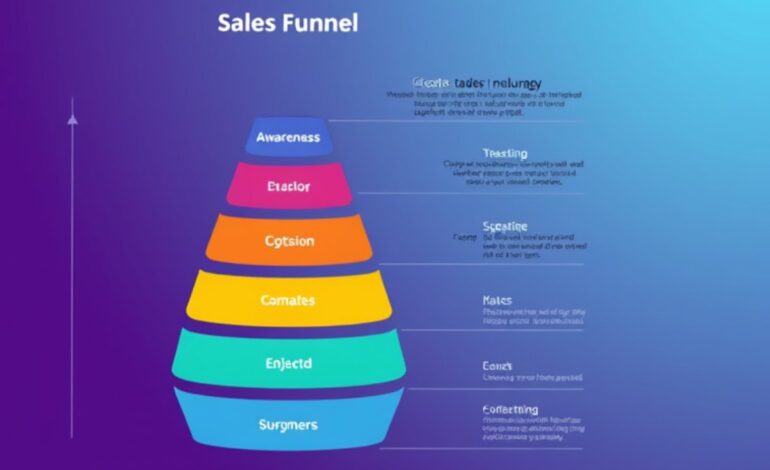Navigating the SaaS Sales Funnel: Strategies for Every Stage

The SaaS sales funnel isn’t just about turning leads into customers; it’s about guiding prospects through each stage with a clear and engaging journey. From awareness to decision-making, every stage presents unique opportunities to nurture trust and demonstrate value. Effectively managing the SaaS sales funnel ensures customer acquisition, long-term retention, and advocacy.
A marketing agency for SaaS can help streamline this process by designing strategies tailored to each stage of the funnel. These agencies leverage customer insights, data analysis, and marketing expertise to ensure that every interaction moves prospects closer to conversion while maintaining their interest and loyalty.
Understanding the SaaS Sales Funnel
The SaaS sales funnel typically has three main stages:
- Top of the Funnel (TOFU): Awareness
At this stage, prospects are just discovering your product. The goal is to educate them about your solution and its potential to solve their challenges. - Middle of the Funnel (MOFU): Consideration
Prospects are evaluating your product against alternatives. Here, the focus is on highlighting key benefits and building credibility. - Bottom of the Funnel (BOFU): Decision
At this point, prospects are ready to make a purchase. Your job is to provide the final nudge that convinces them to choose your solution.
Strategies for Each Stage of the SaaS Sales Funnel
Let’s break down the strategies for each stage of the funnel to optimize your sales process:
1. Top of the Funnel: Awareness
The primary objective at this stage is to attract attention and generate interest.
- Content Marketing: Create blog posts, white papers, and infographics addressing common industry pain points.
- SEO Optimization: Ensure your website ranks for relevant keywords to make it easier for prospects to find you.
- Social Media Campaigns: Use social platforms to share educational content and engage with your audience.
- Webinars and Events: Host webinars that introduce your product and its capabilities.
The goal is to position your brand as a helpful resource while building initial trust with your audience.
3. Middle of the Funnel: Consideration
Here, prospects are actively researching your product and comparing it with competitors. To stand out, focus on building trust and demonstrating your value:
- Case Studies and Testimonials: Show how your product has solved similar problems for others.
- Email Nurturing Campaigns: Send targeted emails with detailed information about features, benefits, and use cases.
- Product Demos: Offer live or recorded demos to showcase your solution’s functionality.
- Interactive Tools: Provide ROI calculators or feature comparison sheets highlighting your product’s advantages.
This stage addresses doubts and provides enough information to keep prospects engaged.
4. Bottom of the Funnel: Decision
At the BOFU stage, your goal is to close the deal. Focus on reducing friction and reinforcing trust:
- Personalized Offers: Tailor pricing packages or discounts based on the prospect’s needs.
- Free Trials: Allow prospects to experience your product risk-free.
- Customer Support Access: Offer direct access to your support team to answer final questions.
- Follow-Up Calls: Ensure timely communication to keep the deal moving forward.
You increase the likelihood of conversion by providing reassurance and demonstrating how your product aligns with their goals.
Measuring Success in the Sales Funnel
Tracking metrics at each funnel stage is essential to identify strengths and weaknesses. Key metrics include:
- Conversion Rates: Measure how many prospects move from one stage to the next.
- Time Spent in Each Stage: Identify bottlenecks that delay progress.
- Customer Acquisition Cost (CAC): Track how much you spend acquiring new customers.
Using this data, you can refine your strategies and improve the efficiency of your sales funnel.
How a Marketing Agency for SaaS Enhances Funnel Performance?
A marketing agency for SaaS brings expertise in crafting targeted campaigns for each stage of the funnel. They:
- Develop content tailored to your audience’s needs.
- Optimize campaigns to improve conversion rates.
- Analyze data to identify areas for improvement.
- Align sales and marketing teams to create a seamless customer journey.
With their support, SaaS companies can maximize the potential of their sales funnels and achieve sustainable growth.
Conclusion
The SaaS sales funnel is more than a pathway—it’s a roadmap for building trust, nurturing leads, and driving long-term success. By tailoring strategies to each stage and consistently refining your approach, you can create a seamless journey that converts prospects into loyal customers. Partnering with a marketing agency for SaaS ensures that every funnel stage is optimized, allowing your business to grow efficiently and effectively. Your sales funnel can become a powerful tool for achieving your business goals with the right strategies.
